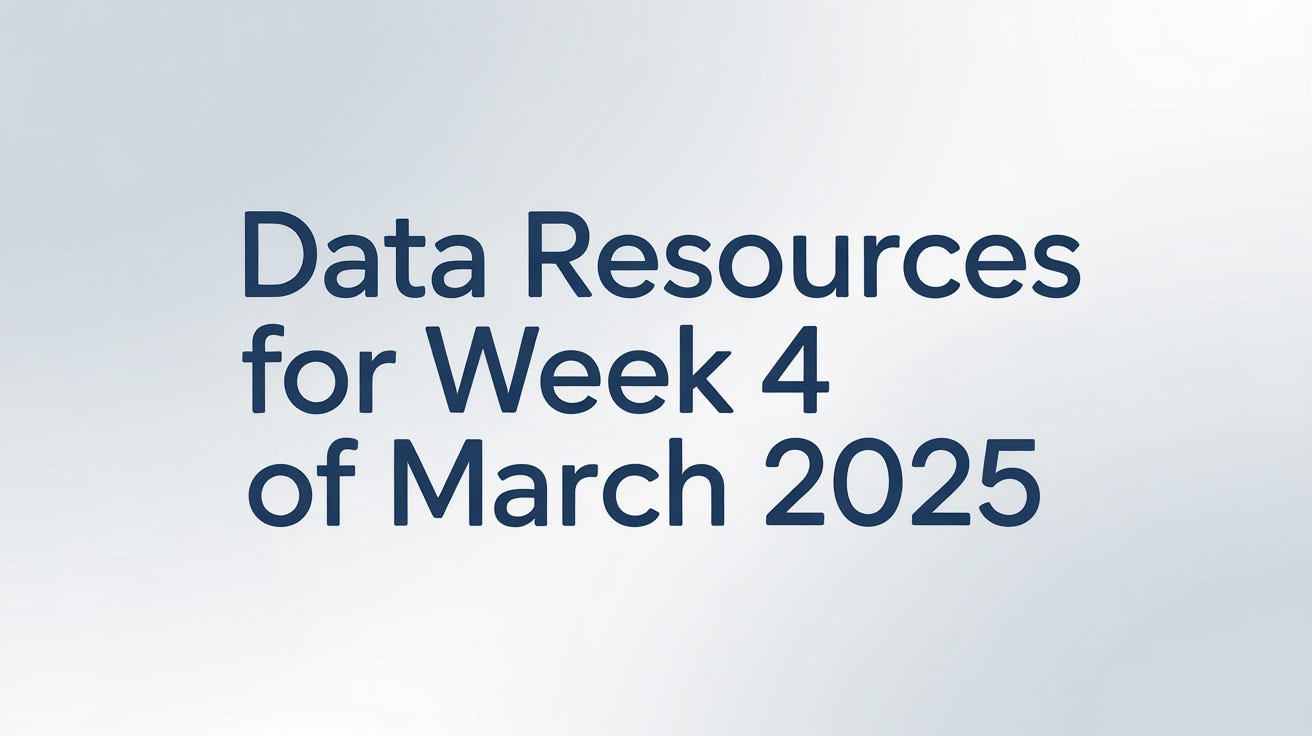Buried under 10,000 tools and news?
Overwhelmed by low-quality data dumps.
🧠✨This series filters the noise.
Only the best. Every week.
What am I talking about?
So, I get many inquiries regarding data science and AI roadmaps.
I love to help people regarding the inquiry above, so I put all the valuable learning resources in the Data Science Learning Material.
However, I realize that the data world is evolving rapidly every day.
But there is still so much noise about what matters.
That’s why I want to start a new series that will compile weekly curated data resources in one place.🚀
P.S.1 I plan to offer this series as a benefit for paid members in the future, but I will make sure that the first installment remains accessible to everyone, so you can understand what to expect from it.
P.S.2 I plan to launch this every Sunday moving forward, so stay tune!
Curious about it! Let’s get into it!
Don’t forget to subscribe to get access to these amazing pro tips! 👇👇👇
Data Science Resources for the Week 4 of March 2025
Let’s start with the Data Science resource you should know from Week 4 of March 2025.
1. Mastering Data Normalization Blog by Datasciencedojo
Data normalization is data preprocessing often performed by data professionals, but only if we know why we do it. In data management, it minimizes redundancy and enhances efficiency.
Data normalization is important because it can prevent anomalies, such as insertion, update, and deletion errors, resulting from data inconsistencies.
To learn more about Data Normalization, check out the Mastering Data Normalization blog by Datasciencedojo.
2. Data Sources Exploration by KDnuggets
Data is the lifeline of any data professional's work. Without the proper data, you will have a subpar analysis and a garbage model. That’s why having quality and appropriate data sources is important.
I recently wrote in KDnuggets about where we could get our dataset. From public and open data sources to synthetic data, we will explore why you want to use these data sources.
Visit the “Where Do We Get Our Data? A Tour of Data Sources (with Examples)” blog to learn more.
3. Microsoft Researcher and Analyst in Microsoft 365 Copilot
Microsoft recently announced that it will publish two different reasoning agents, Researcher and Analyst, later this April.
Researcher is designed to leverage advanced AI models to conduct in-depth research, while Analyst, built upon OpenAI's o3-mini reasoning model, focuses on performing advanced data analysis, including the capability to run Python code and generate detailed reports
4. Streamlit 1.44.0 Release
Streamlit recently released a new version that adds advanced theming options for customizing app appearance (fonts, colors, etc.) without CSS . It also added new features like st.badge (for inserting badges) and a streamlit init command to scaffold new apps
Generative AI Resources for the Week 4 of March 2025
Numerous developments are occurring in the Generative AI space in Week 4 of March 2025. However, I will curate resources specifically tailored for you, allowing you to focus on what is important.
1. Vibe Coding 101 with Replit
Vibe coding is the word of the year, and the trend seems to grow daily.
To answer that need, DeepLearning.AI recently announced a free short course titled "Vibe Coding 101 with Replit."
This concise course, lasting 1 hour and 34 minutes, aims to teach learners how to develop and deploy two applications using Replit's agentic AI coding tools.
Michele Catasta, president of Replit, and Matt Palmer, head of developer relations at Replit, will lead the course, so don’t miss it.
2. Reinforcement Learning: A Comprehensive Overview by Kevin P. Murphy
The Reinforcement Learning Overview by Kevin P. Murphy, released on 25 March 2025, is intended to become a complete resource for reinforcement learning.
This overview explores foundational concepts and key models of reinforcement learning, illustrating how it serves as a powerful framework for solving sequential decision-making problems in which an agent learns optimal behaviors through interaction with its environment.
It explores key challenges like partial observability, model uncertainty, and the exploration-exploitation tradeoff. It emphasizes how RL algorithms, such as value-based, policy-based, and model-based approaches, optimize decision-making by balancing immediate rewards with long-term goals.
The overview also highlights strategies and techniques to improve RL performance, such as handling reward structures, optimizing policies, and addressing computational challenges. Overall, it’s a resource you should read if you want to focus on Reinforcement Learning.
3. Anthropic “Tracing the thoughts of a large language model” Blog
With how popular people want to understand how the Anthropic Claude model works, the Anthropic decided to publish the internal mechanism of their AI model. The “Tracing the thoughts of a large language model” blog explores how the model can process and generate responses.
By developing interpretability tools akin to an "AI microscope," researchers aim to understand Claude's strategies during multilingual translation, poetry composition, and mathematical reasoning. This exploration clarifies the model's decision-making pathways, offering insights into its capabilities and potential areas of concern.
If you are curious about how the model works, then you should read the complete blog!
4. Gemma 3 Technical Report by Google DeepMind
Gemma 3 has recently been released and introduced as a lightweight, state-of-the-art open model. For those who want to learn more about the model, the Gemma 3 Technical Report by Google DeepMind has been published to provide a better understanding.
The latest models in the Gemma family of open-weight large language models have been released with sizes ranging from 1 to 27 billion parameters. Unlike previous iterations, Gemma 3 introduces multimodal capabilities (integrating vision via a SigLIP encoder), supports longer contexts (up to 128K tokens), and significantly enhances multilingual, mathematical, reasoning, and instruction-following skills through architectural and training innovations.
Notable updates encompass a novel attention mechanism that integrates local and global layers, an advanced training pipeline utilizing knowledge distillation, and a post-training process that enhances overall performance via improved reinforcement learning objectives. The models are streamlined for efficiency on consumer-grade hardware and offered in various quantization formats to optimize memory efficiency.
If you are working with the Gemma 3 model, I suggest you read further about the technical report.
5. Measuring AI Ability to Complete Long Tasks by METR
The researcher from METR (Model Evaluation & Threat Research) recently released a paper, “Measuring AI Ability to Complete Long Tasks,” which introduces a novel metric called the "task completion time horizon". The metric assesses AI capability by measuring the length of tasks (in human hours) an AI can complete with a 50% success rate.
By benchmarking top AI models released from 2019 to 2025 and comparing their performance to skilled human baselines, they found that the AI’s 50% task completion time horizon has been doubling approximately every 7 months. This suggests exponential growth in AI’s ability to perform longer and more complex tasks, largely driven by improvements in reasoning, reliability, and tool use.
The authors examined the external validity of this trend, testing if rapid progress on curated benchmarks applies to real-world tasks. They noted some decline in AI performance but no slowdown in progress. They estimate that by 2028–2031, AI systems could autonomously handle tasks equivalent to a month of human expert work, marking a potential milestone for transformative AI capabilities.
However, they warn that differences between benchmark tasks and real-world work, along with changes in AI development (like compute limits or better agent training), could greatly impact this forecast.
Love this article? Don’t forget to share and comment!
P.S.3: If you're at a pivotal point in your career or sitting on skills you're unsure how to use, I offer 1:1 mentorship.
It's personal, flexible, and built around you.
Curious? Learn more:
For Short-Term mentorship, visit me here
For long-term mentorship, visit me here (you can even enjoy a 7-day free trial).





